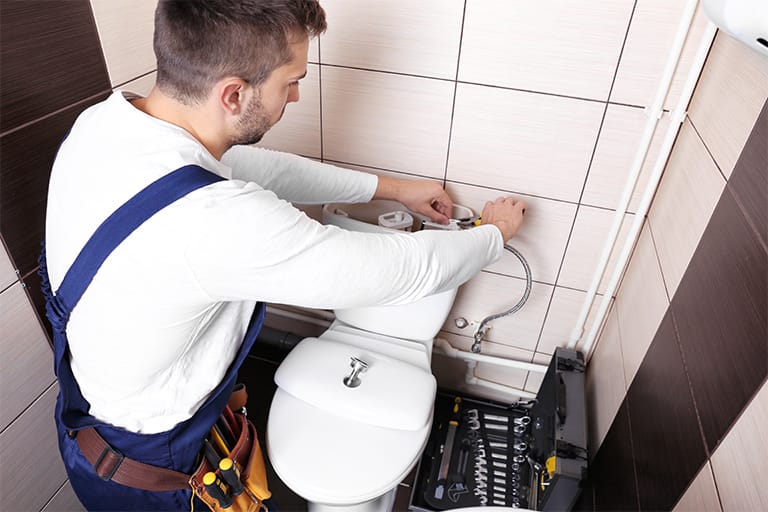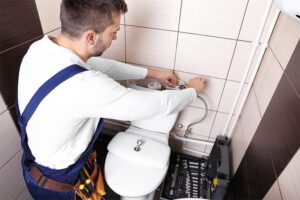Plumbing is the system of pipes and fixtures that delivers fresh, clean water and carries away waste. It is vital for human life and supports sanitation and hygiene. For more information, click the link https://www.platinumplumbingsbc.com/ provided to proceed.
A career as a plumber requires technical knowledge and specialized training, which can be obtained through a vocational school or a learn-while-you-earn apprenticeship. Soft skills like listening and problem-solving are also important for the job.

The water supply is the infrastructure for collecting, transporting, treating, storing, and distributing freshwater for use in homes, businesses, industry, agriculture, sewage disposal, and public needs such as fire fighting. It includes the supply and delivery systems that connect the source to consumers, such as pipes, reservoirs, and pumping stations. It also consists of the distribution and delivery networks that connect consumers to their water sources, such as faucets and toilets. The water supply may be from the surface or groundwater, and pumps usually pressurize it. It may be transported through aqueducts, pipelines, or other open-channel transport systems like rivers and lakes.
The public and private water suppliers that withdraw water from natural resources and deliver it to the public water supply system are the most important components of a water supply network. They differ physically, such as size and coverage, ownership and governance arrangements, and water sourcing. The distribution systems transport the treated and filtered water from the water plant to customers. Cross-connections often compromise water quality through a direct or indirect physical connection or structural arrangement that allows nonpotable water or water of uncertain or questionable quality to enter safe water systems.
A typical home’s main water line (or water service line) is connected to the public main line and then splits into hot and cold supply lines that go to the house. The supply lines are then attached to the plumbing fixtures in each room. In newer houses, the water supply lines for each fixture are separate, so using the water for showers or washing machines doesn’t impact the availability of water for the different fixtures in the house.
The water supply is a fundamental human need and an essential commodity for the economic development of societies. It is used for drinking, cooking, bathing, sanitation, and agricultural and industrial purposes. Water supplies are typically managed by governments or by public water utilities. Standards and laws regulate the drinking water supply, and the quality is monitored to ensure public health.
Drainage systems are a complex network of pipes that carry waste and wastewater away from homes and businesses. They are usually located underground and often out of sight. They are angled downward to encourage the flow of water and waste toward municipal sewer lines or septic tanks. Some drainage systems also include vents to prevent sewage gases from entering buildings.
All drains within a home or business are connected to the house sewer line via a main pipe called the “main stack.” The house sewer line is typically angled downward and bends in the pipe called traps to retain a small amount of water that keeps odorous sewer gasses from escaping into the house.
If you’ve ever noticed a foul sewer smell coming from your toilets, showers, or sinks, it may be because the water in the trap has evaporated. Running water and flushing the toilets will fill up these traps again.
Drainage systems Outside the home include gutters and downpipes that direct excess rainwater into a stormwater drain or gullies. To minimize erosion, the drains are usually covered by a porous surface such as gravel, concrete, or clay tiles. During construction, the gradient of the drains is tested and adjusted to ensure the system will operate correctly.
These systems are generally out of sight and reach, so it is difficult for homeowners to know the condition of their drains and whether they are functioning correctly. The best way to inspect them is by hiring a professional plumber. Professional plumbers can use CCTV drain inspection cameras to locate problems such as cracks, rusting, tree root ingress, and blockages.
A plumbing system must be properly maintained to ensure a long life and prevent damage or health issues. The main drain pipe must be regularly cleaned and checked for obstructions. Using a high-pressure water jet, plumbers can clean the interior walls of drains to remove built-up soap scum and grease. Alternatively, chemical drain cleaners can break down organic matter and clear stubborn blockages. Regular cleaning and maintenance of drains will reduce the risk of blockages, which can lead to flooding, health issues, and expensive repair bills.
A plumbing fixture is any device connected to a plumbing system to supply or drain water. This includes faucets, sinks, toilets, showers, and bathtubs. Fixtures are important components of a home’s plumbing system because they help deliver freshwater and remove wastewater. They also serve as a means of accessorizing a bathroom or kitchen design. Plumbing fixtures are available in various styles and materials to accommodate multiple aesthetic preferences.
In addition, they are usually constructed using durable and long-lasting materials to ensure longevity. Moreover, they are generally made energy-efficient to save on utility bills. As such, purchasing plumbing fixtures from reputable brands is important to guarantee quality and reliability. Some popular plumbing fixture brands include Kohler, American Standard, and Moen.
Kohler is a brand known for its sleek designs and innovative products designed to last. They manufacture a variety of plumbing fixtures for both residential and commercial applications. Their products are easy to install and come with a lifetime warranty. They also have a strong commitment to water efficiency and conservation.
American Standard is a renowned manufacturer of plumbing fixtures for homes and businesses. They have been in business for more than 140 years and offer a variety of options to choose from. Their high-quality and affordable products make them a great choice for homeowners. In addition, they have a large selection of kitchen and bathroom products in various styles to suit any décor.
A toilet is a common fixture in any home or office. It is used to dispose of human waste and may be equipped with a bidet for additional functionality. Toilets are usually constructed from porcelain, but they can be made from other materials, such as steel or fiberglass. They are typically anchored to the floor and wall with brackets, which provide stability and support. Most toilets have a water outlet and drain, usually at the bowl’s base. They also have a flush handle to operate the water tank and a drainpipe that leads away from the basin.
Plumbing systems are complex, requiring much work to install and maintain. However, our lives would be much more difficult without them, and health risks would abound. Plumbing is essential to both homes and businesses, as it provides safe, hygienic living conditions and allows for the proper disposal of waste.
Plumbing encompasses various activities, from installing water supply pipes to connecting appliances and fixtures. Plumbers must have a thorough knowledge of building codes and regulations in their area. They also must be able to interpret blueprints well to make accurate installation and repair plans. Plumbers often work in commercial and industrial settings, where they must collaborate with architects and construction teams to ensure that plumbing systems integrate seamlessly into the overall building design.
The most common plumbing installations are in new buildings. These projects start with setting the sewer accommodation stubs, which connect to the main line that leads to the sewerage system. Next, the plumbers install what is known as rough plumbing, which consists of laying the basic pipes before the concrete foundation is poured. Finally, the plumbers will finish the plumbing by connecting all the appliances and fixtures, including water heaters, sinks, faucets, bathtubs, toilets, bidets, dishwashers, and so on.
Another type of plumbing installation is the replacement of existing pipes and fixtures. This can be due to damage, wear and tear, or the desire for a different style or functionality. Replacing old pipes is a great way to upgrade your home’s aesthetics and reduce the risk of leaks and other problems.
Whether you’re installing a new bathroom, kitchen, or irrigation system, the best way to avoid future problems is to hire a qualified professional for the initial installation. An experienced plumber will be able to set up the system correctly, reducing the risk of errors that could lead to costly repairs down the road. In addition, a certified plumber will know the latest building codes and regulations in their area, ensuring that your plumbing is up to code.


